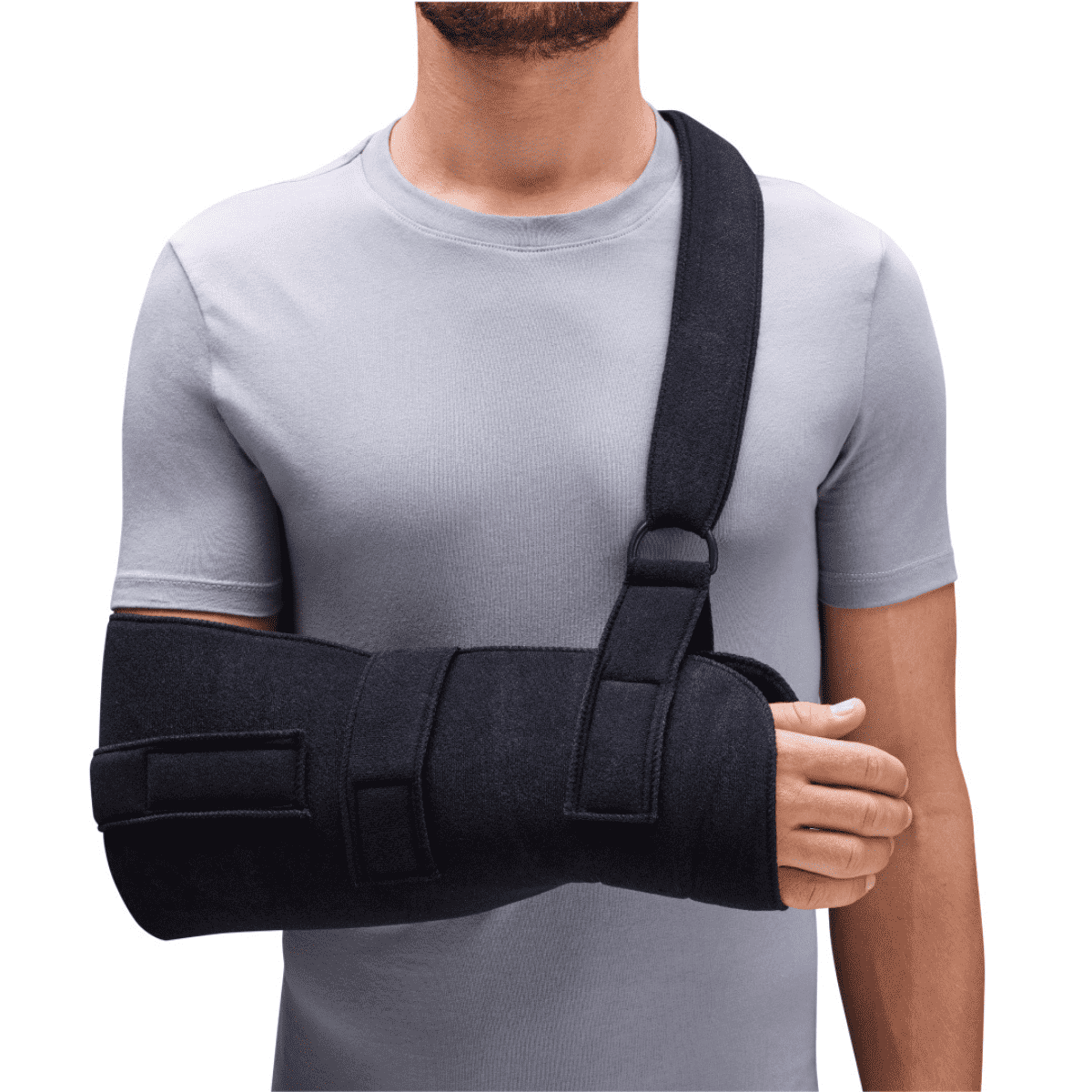Thumb splints aren’t suitable for every injury or type of joint pain, but they are great for others. You may need one for more severe forms of arthritis, ligament injuries, and fractures, as they require immobilisation to let tissues set and heal.
What does a thumb splint do
Thumb splints lock the thumb in place. Clinicians generally recommend them for injuries and conditions where excessive movement can further damage the tissues. Thumb splints like the b:joynz wrist and thumb brace are made up of stays, soft fabric, and additional support straps to protect the joint and ensure long-wearing comfort.
b:joynz wrist and thumb brace
Conditions where you might need a thumb splint
Arthritis
Thumb arthritis is often rheumatoid (RA) or osteoarthritis (OA). The former is an inflammatory condition in which the body’s immune system attacks healthy cartilage. The latter is degenerative, in which the cartilage slowly wears away with age.
Common symptoms include pain, swelling (RA), and stiffness. As arthritis pain often stems from frayed cartilage rubbing against each other or bone-on-bone contact once cartilage wears away, an immobilising splint can provide relief.
Sprain
Sprains are damage to the ligaments, most often caused by injury. Common symptoms include pain, instability, and swelling. A splint can help by stabilising and protecting the thumb as it recovers.
Fracture
Fractures involve damage to the thumb bones. With a broken thumb, you’ll likely feel intense, radiating pain and experience swelling. In some cases, fractures need surgery to set. In others - as in a hairline fracture - you’ll just need a cast or splint to keep the bones in place as they heal.
Trigger thumb: stenosing tenosynovitis
Trigger finger is a condition that most commonly pops up in the ring finger and thumb. In this condition, the pulley tissues helping your flexor tendons bend your fingers become thickened and inflamed, making it harder for the tendons to glide as they’re supposed to. As a result, you may experience an often painful locking sensation as you try to curl your thumb towards your palm. A thumb splint can help you recover from the condition by preventing such movements, helping your tendons and pulleys recover without interruption.
Carpal tunnel
Caprap tunnel is typically felt in the wrist but can also affect the thumb joint. The condition stems from inflammation around your median nerve (which runs through the wrist and into the thumb and pointer, middle, and ring fingers), presses into the nerve sheath and starts irritating the nerve. You may feel tingling, shooting pains, and numbness. In milder cases, you may just need a compression sleeve like the b:joynz wrist support. It will help reduce pain and inflammation associated with the condition while still allowing for the full range of motion.
However, more severe cases require immobilising the wrist and sometimes the thumb to prevent further nerve compression.
b:joynz wrist support
Beyond thumb splinting
Wearing a brace is essential when managing pain or recovering from injury. However, you should also take other steps to assist the recovery process.
- RICE is vital for recovering from soft-tissue injuries
- Specific exercises and stretches can help with tenosynovitis and carpal tunnel. They’re also helpful for maintaining strength after ligament injuries and can even help relieve arthritis symptoms. Exercises like shakes, median nerve glide, and squeezing a stress ball are a good place to start - provided your physio has no objections to them.
- In cases of intense pain, talk to your doctor about taking NSAIDs in the first stages of recovery. Just remember that pain relief drugs should always be taken in conjunction with active therapies like physiotherapy, bracing, and RICE and never relied on alone.
When do you need a thumb splint: the takeaway
Clinicians typically reserve thumb splints for more severe injuries and conditions where immobilising the joint is necessary to prevent further damage. Moderate to severe arthritis, tenosynovitis, ligament tears, carpal tunnel, and fractures typically need splinting to reduce pain and assist recovery.














